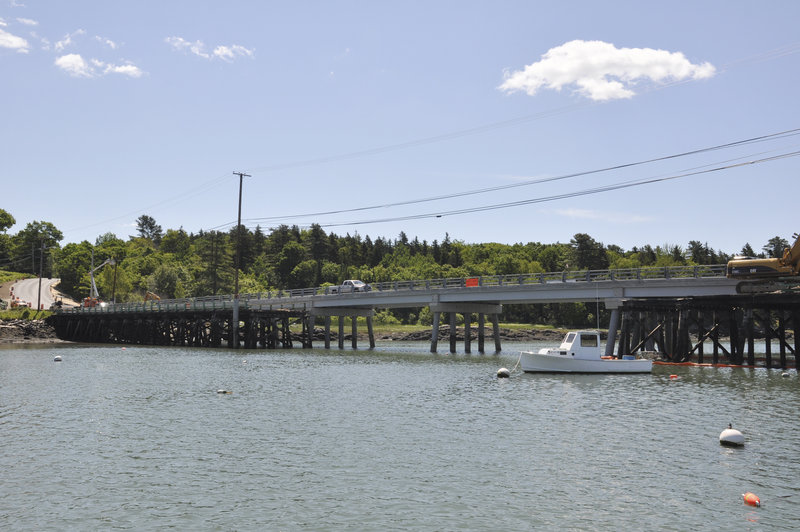The world’s largest composite bridge, which is located in the midcoast community of Boothbay, is attracting national attention.
A team of 10 bridge engineers from across the nation spent part of last week inspecting the 540-foot-long Knickerbocker Bridge, which connects the town of Boothbay with Hodgdon Island.
The engineers, who are members of Technology Implementation Group, were in Maine to determine if new composite bridge technology could be used in other parts of the nation.
Their opinions could have economic implications for Harbor Technologies of Brunswick, which manufactured the hybrid composite beams used in the Boothbay structure.
“The result of their visit could be the creation of a strategy to promote this technology nationwide,” said Ken Sweeney, the Maine Department of Transportation’s chief engineer.
Sweeney, who accompanied the visiting engineers, said companies like Harbor Technologies stand to benefit if the market demand for such materials should increase. Composite bridge technology has been in use for just 10 years.
Mark Latti, spokesman for the Maine Department of Transportation, said the new Knickerbocker Bridge opened to traffic on June 11.
The bridge, which cost $5.5 million to build, was finished ahead of schedule by Richmond-based contractor Wyman and Simpson.
Latti said the new bridge replaces the old wood piling Knickerbocker Bridge, which was constructed in 1930 over the Back River.
The old bridge is still being removed.
The state said the Knickerbocker Bridge is the largest composite bridge in the world.
Sweeney said the manufacturing process involves filling the composite beams with concrete and steel to make for a longer lasting bridge. The anticipated life span of a composite bridge is 100 years.
Historically, bridges in Maine and across the country have been constructed using concrete and steel. Those bridges have a typical life span of 50 to 75 years.
Sweeney said composite bridges offer several advantages: The beams are lightweight and easier to transport. They are also corrosion resistant, require little if any maintenance and do not need to be painted.
He said the carbon fibers used in composite materials are stronger and more flexible than concrete or steel.
“Composites bend, but they don’t break,” Sweeney said.
Staff Writer Dennis Hoey can be contacted at 791-6365 or at:
dhoey@pressherald.com
Send questions/comments to the editors.





Success. Please wait for the page to reload. If the page does not reload within 5 seconds, please refresh the page.
Enter your email and password to access comments.
Hi, to comment on stories you must . This profile is in addition to your subscription and website login.
Already have a commenting profile? .
Invalid username/password.
Please check your email to confirm and complete your registration.
Only subscribers are eligible to post comments. Please subscribe or login first for digital access. Here’s why.
Use the form below to reset your password. When you've submitted your account email, we will send an email with a reset code.